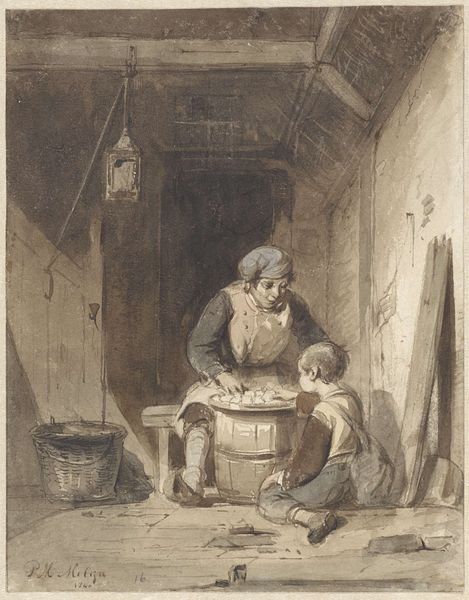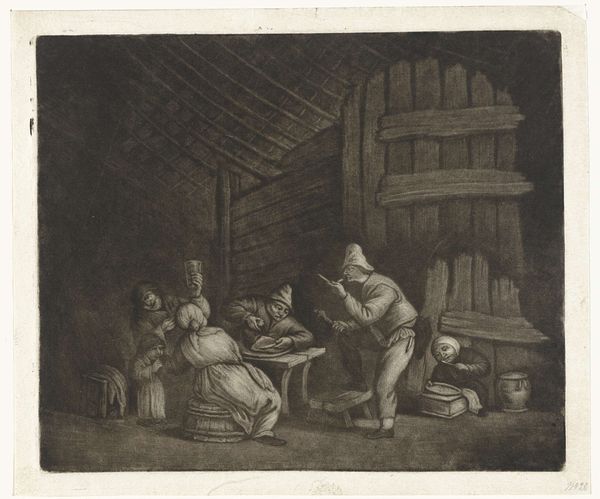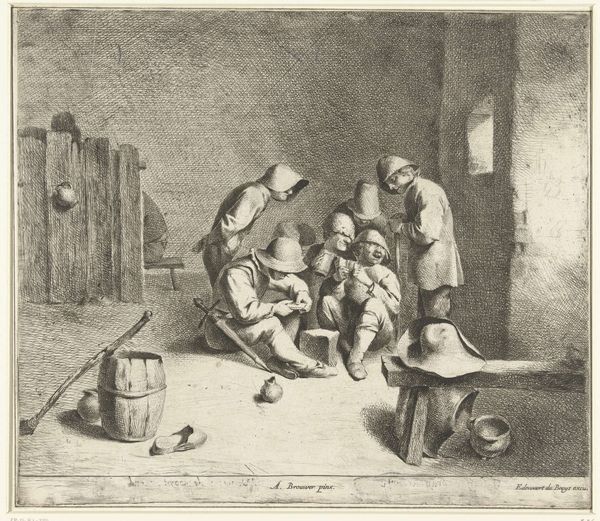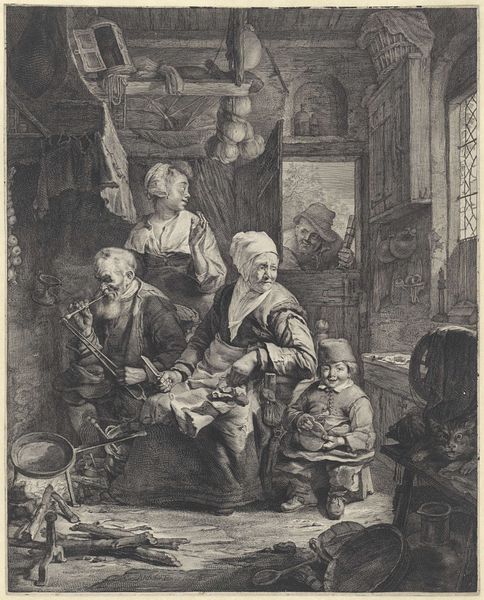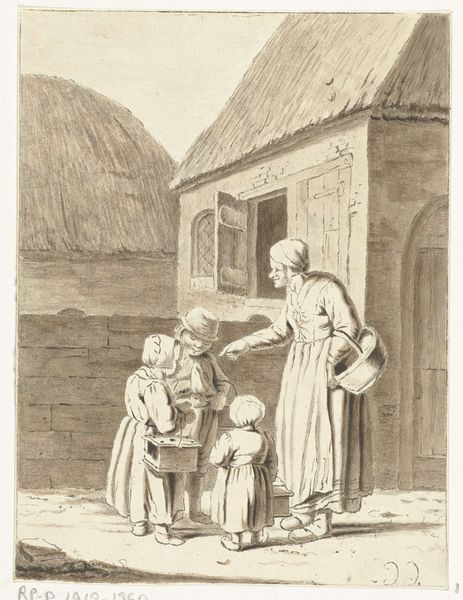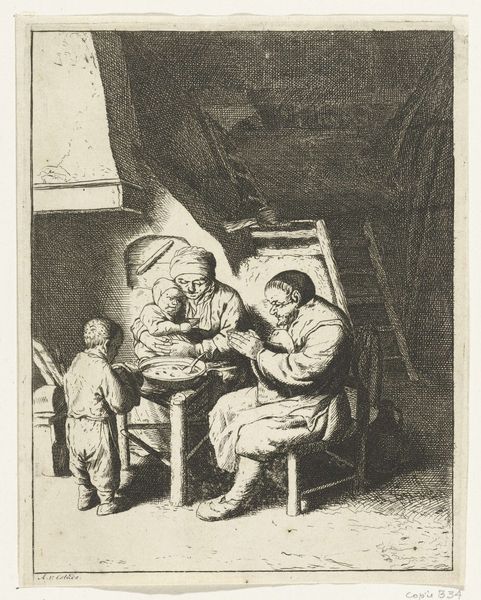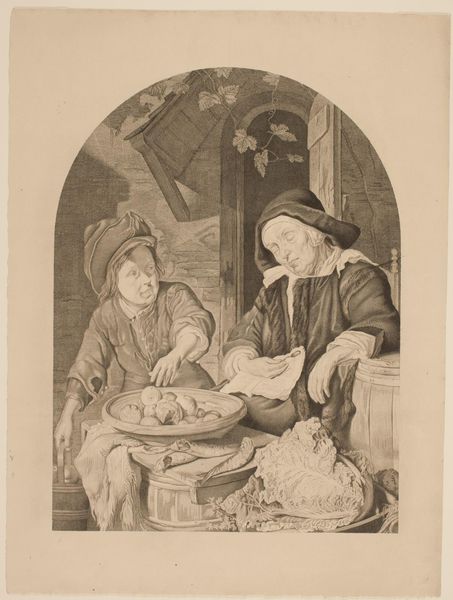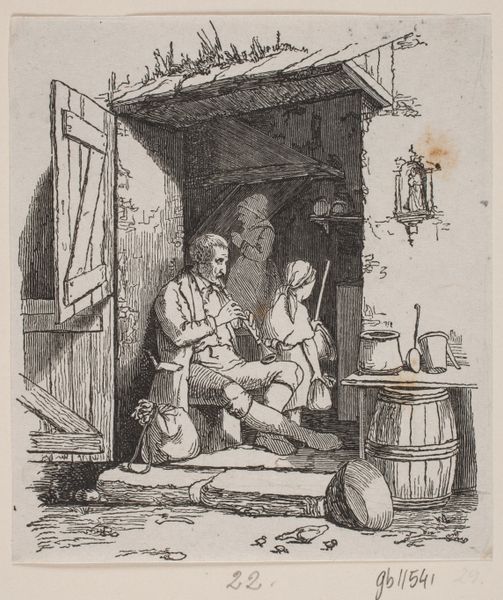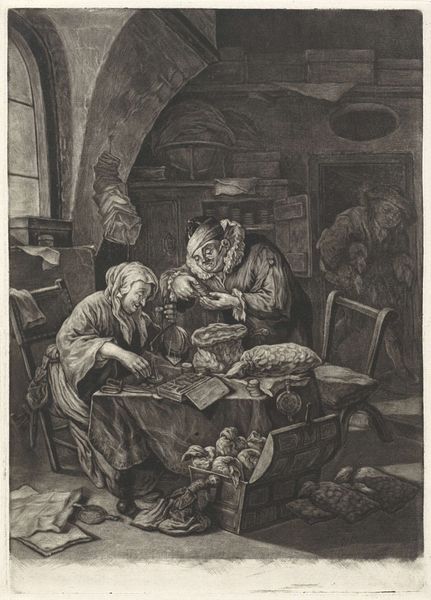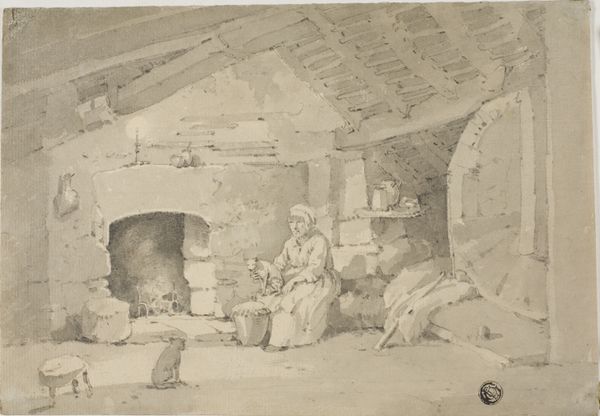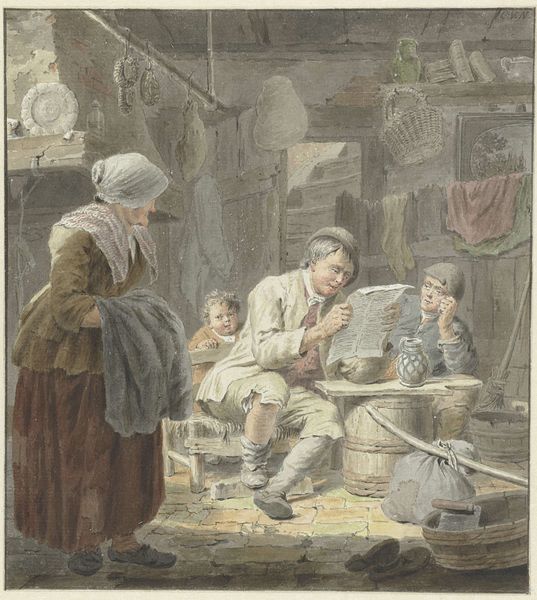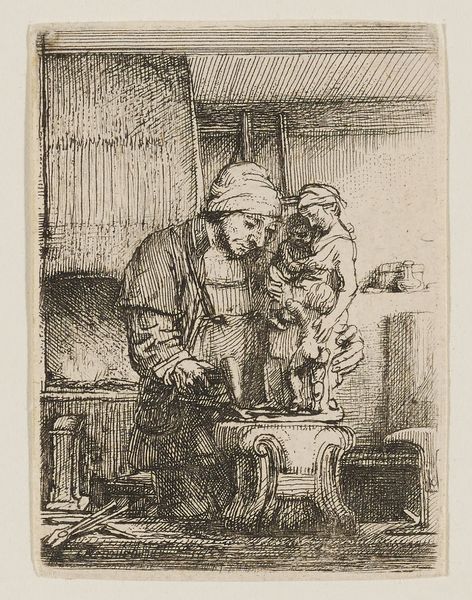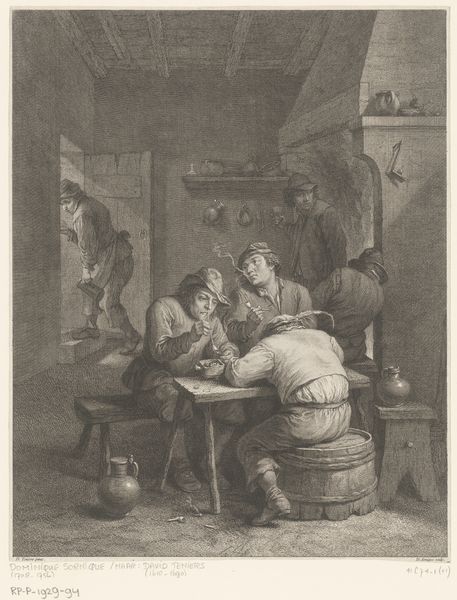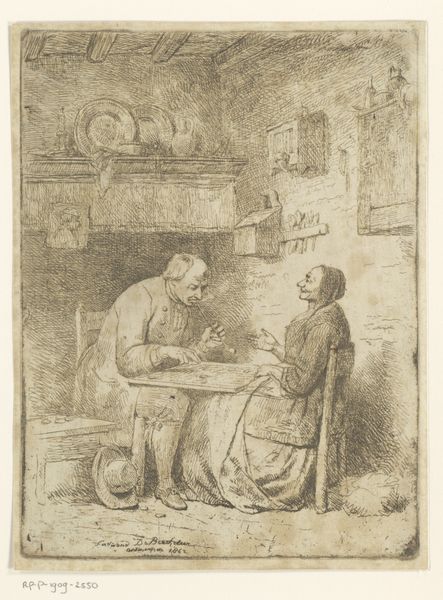
Terwijl een vrouw in slaap is gevallen, schilt een oude man aardappels 1802 - 1883
0:00
0:00
drawing, ink
#
portrait
#
drawing
#
landscape
#
charcoal drawing
#
oil painting
#
ink
#
genre-painting
#
realism
Dimensions: height 212 mm, width 267 mm
Copyright: Rijks Museum: Open Domain
Curator: It feels immediately intimate and familiar. The scene almost seems frozen in time, quiet and unassuming, what are your initial impressions? Editor: You're right. The sepia tones give it a wistful quality, like a faded memory. A hardworking man next to a child who watches, while a woman has fallen asleep on the job… It's humble, a glimpse into the private lives of ordinary folk, but I can imagine how it portrays the gender roles back then. Curator: Let's unpack that a bit. The artwork before us is entitled "While a woman has fallen asleep, an old man peels potatoes." It is by Ferdinand de Braekeleer, made between 1802 and 1883. De Braekeleer rendered this piece with ink on paper, lending a subtle, melancholic touch to the quotidian scene. But who does this reflect and portray in its creation and social acceptance? Editor: In its realism, it reflects the period's interest in depicting everyday life without romanticizing it, perhaps reflecting a growing awareness of social issues. And by capturing it in an ink drawing and exhibiting this at the time, these subtle everyday lives were worth immortalizing. Curator: It certainly resonates with a specific period's concerns and visual preferences. How might the contemporary viewer interpret those layers of meaning inherent in those images? The symbolism of daily life frozen in time has lasting resonance across cultures, doesn't it? Editor: It does, yes. It invites empathy, I think. The symbolism around rest, work and responsibility invites debate too. De Braekeleer has captured not just figures but their complex relationship with labor and expectation. You think? Curator: I find it interesting how the work avoids idealization. In this domestic scene there are just figures rendered with raw humanity in ink wash: they seem grounded. This adds layers to its message. Editor: Agreed. The piece prompts one to contemplate labor, familial bonds, and the societal norms that defined existence back then and still permeate through societies today. It captures the public discourse that gives validity to everyday life and renders the lives of marginalized figures as "art". Curator: Yes, there are so many themes to unpack from these frozen everyday images! The interplay of time, culture, and domestic space leaves an aftertaste of reflection and interpretation. Editor: For sure, its unvarnished depiction speaks volumes about the public space in those everyday lives, but most of all it provides that empathy and awareness that moves viewers across time.
Comments
No comments
Be the first to comment and join the conversation on the ultimate creative platform.
